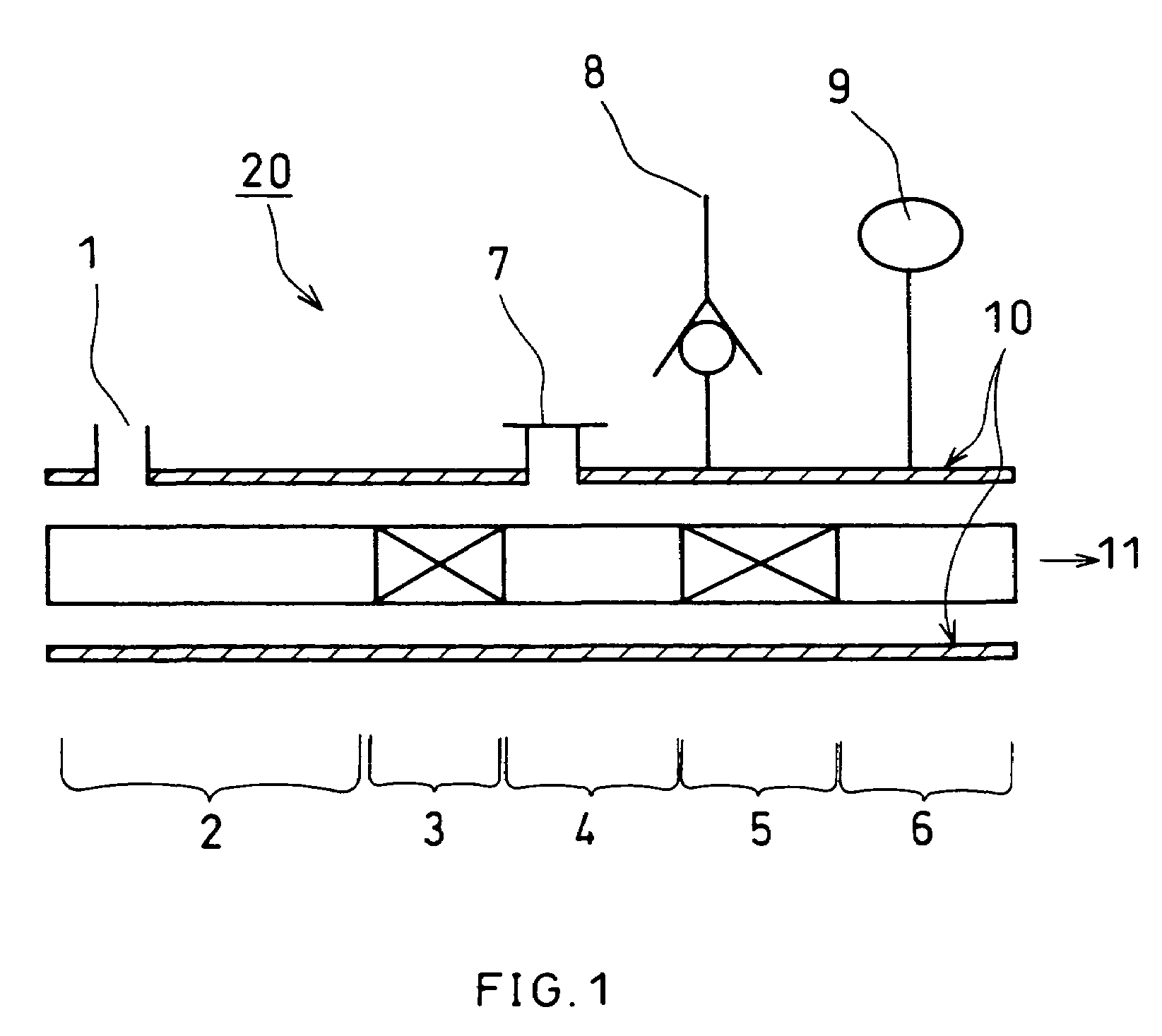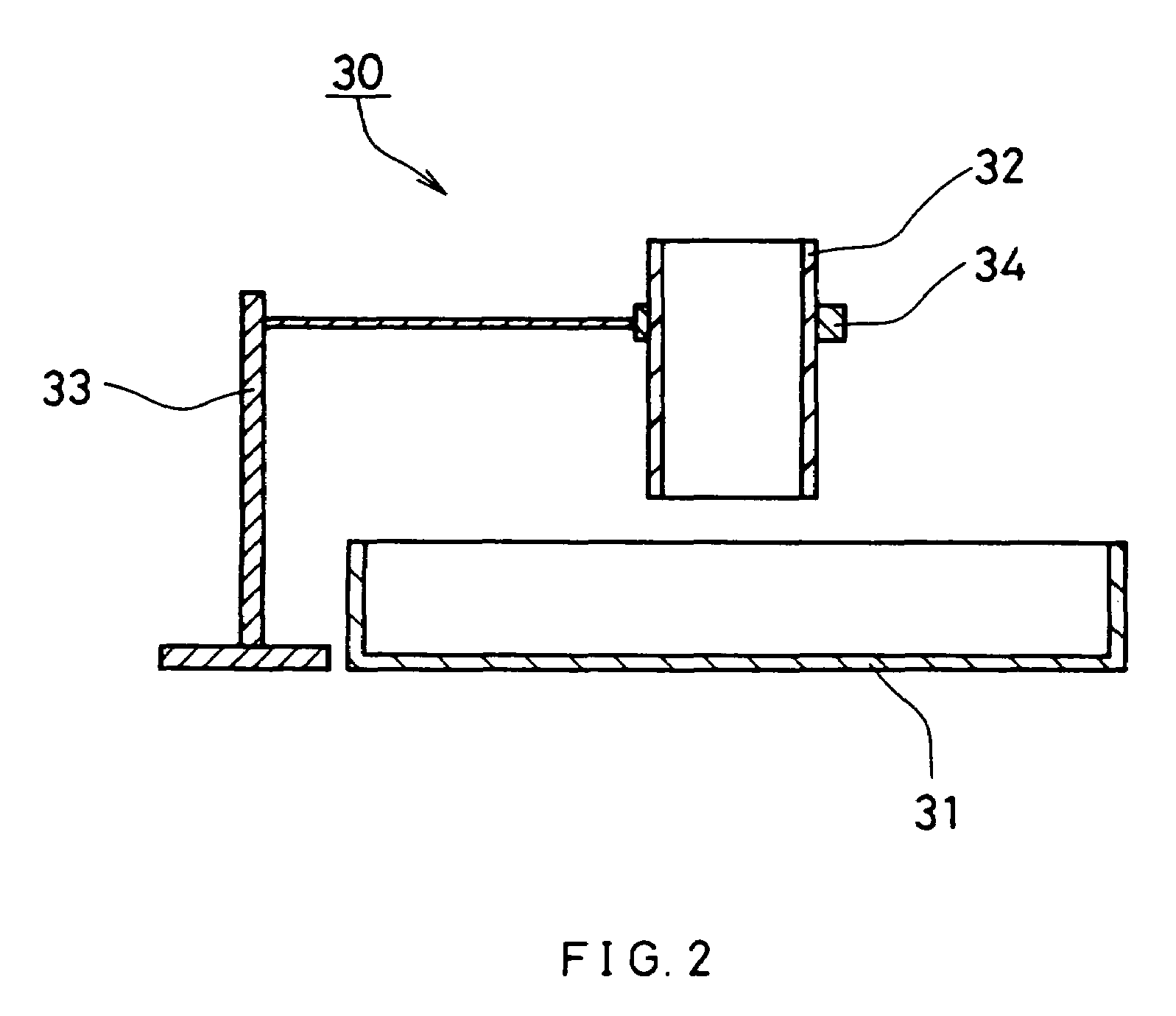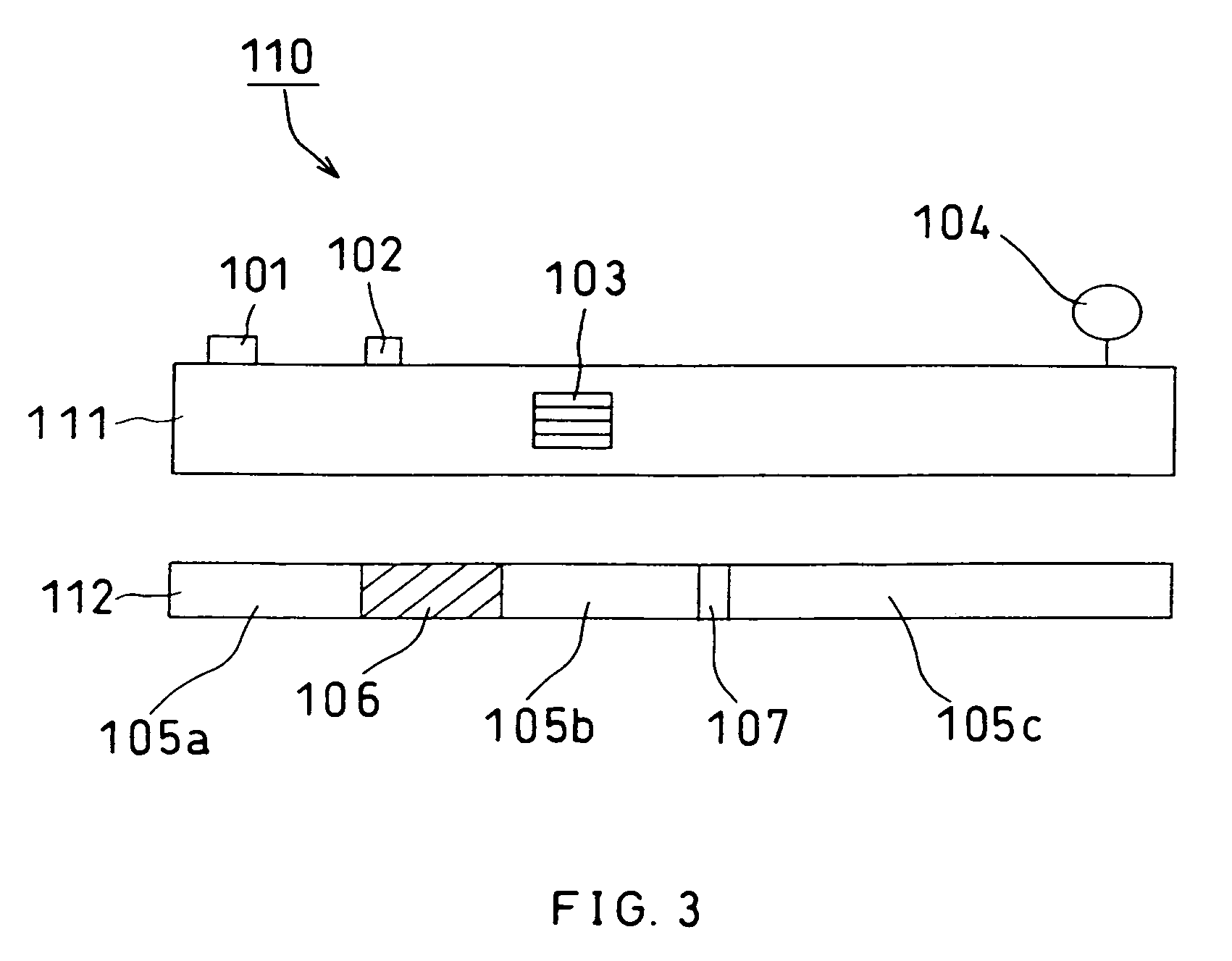Process for producing ethylene-vinyl alcohol copolymer resin, process for producing pellets and resin pellets
a technology of ethylenevinyl alcohol and copolymer resin, which is applied in chemical/physical processes, textiles and papermaking, and group 5/15 element organic compounds, etc., can solve the problems of deterioration of polymer at the time of melt molding, deterioration of product quality, and inability to feed resin smoothly into the extruder, etc., to achieve excellent extrusion stability and thermal stability, the effect of reducing the discharge load
- Summary
- Abstract
- Description
- Claims
- Application Information
AI Technical Summary
Benefits of technology
Problems solved by technology
Method used
Image
Examples
example 1
[0189]EVOH having an ethylene content of 32 mol %, a saponification degree of 99.5 mol % and a water content of 35 weight % was fed into the twin-screw extruder shown in FIG. 1. The temperature of resin at the discharge portion was set to be 100° C. A treating solution made of an aqueous solution of acetic acid / boric acid / sodium acetate / magnesium acetate / potassium dihydrogen phosphate was added from the minor component feeding portion located at the tip of the discharge portion side shown in FIG. 1. The feeding amount of EVOH per unit time was 10 kg / hr (which includes the weight of water contained), and the added amount of treating solution per unit time was 0.65 L / hr. The treating solution has a composition including 4.3 g / L of acetic acid, 15 g / L of boric acid, 4.6 g / L of sodium acetate, 3.0 g / L of magnesium acetate, and 1.4 g / L of potassium dihydrogen phosphate. The following is the specifications of the twin-screw extruder (FIG. 1 shows a detailed structure).
[0190]
TypeTwin-screw...
examples 2 to 4
[0196]EVOH pellets were produced by the same manner as in Example 1 except that an ethylene content, the saponification degree, resin temperature inside the extruder, the water content of the resin before feeding into the extruder and the water content right after being discharged were changed as shown in Table 1 and the feeding amount of EVOH per unit time, the feeding amount and the composition of the solution of at least one additive selected from carboxylic acid, a boron compound, a phosphoric acid compound, alkali metal salt, and alkali earth metal salt are changed as shown in Table 2. Table 1 shows the conditions of extrusion, Table 2 shows the composition of the treating solution, Table 3 shows the composition of the obtained EVOH pellet and Table 4 shows evaluation results.
example 5
[0211]EVOH having an ethylene content of 32 mol %, the saponification degree of 99.5 mol % and the water content of 35 weight % and a sodium content of 1.5 weight % based on metal was fed into a twin-screw extruder shown in FIG. 3. The twin-screw extruder includes a raw material feeding portion, a washing water supply portion, and a dewatering portion. The dewatering portion was provided with a wedge wire type dewatering slit. 0.5 g / L of acetic acid aqueous solution was added from the washing water supply portion. The feeding amount of EVOH per unit time was 50 kg / hr (which includes the weight of water contained), and the added amount of aqueous solution of acetic acid per unit time was 600 L / hr. The retention time of EVOH was 5 minutes. Thereafter, EVOH discharged from a strand die installed at the tip of the extruder was cut in the form of a strand with a pelletizer, to thus obtain pellets. The following are the specifications of the twin-screw extruder.
[0212]
TypeTwin-screw extrud...
PUM
| Property | Measurement | Unit |
|---|---|---|
| temperature | aaaaa | aaaaa |
| pKa | aaaaa | aaaaa |
| melting temperature | aaaaa | aaaaa |
Abstract
Description
Claims
Application Information
 Login to View More
Login to View More - R&D
- Intellectual Property
- Life Sciences
- Materials
- Tech Scout
- Unparalleled Data Quality
- Higher Quality Content
- 60% Fewer Hallucinations
Browse by: Latest US Patents, China's latest patents, Technical Efficacy Thesaurus, Application Domain, Technology Topic, Popular Technical Reports.
© 2025 PatSnap. All rights reserved.Legal|Privacy policy|Modern Slavery Act Transparency Statement|Sitemap|About US| Contact US: help@patsnap.com



